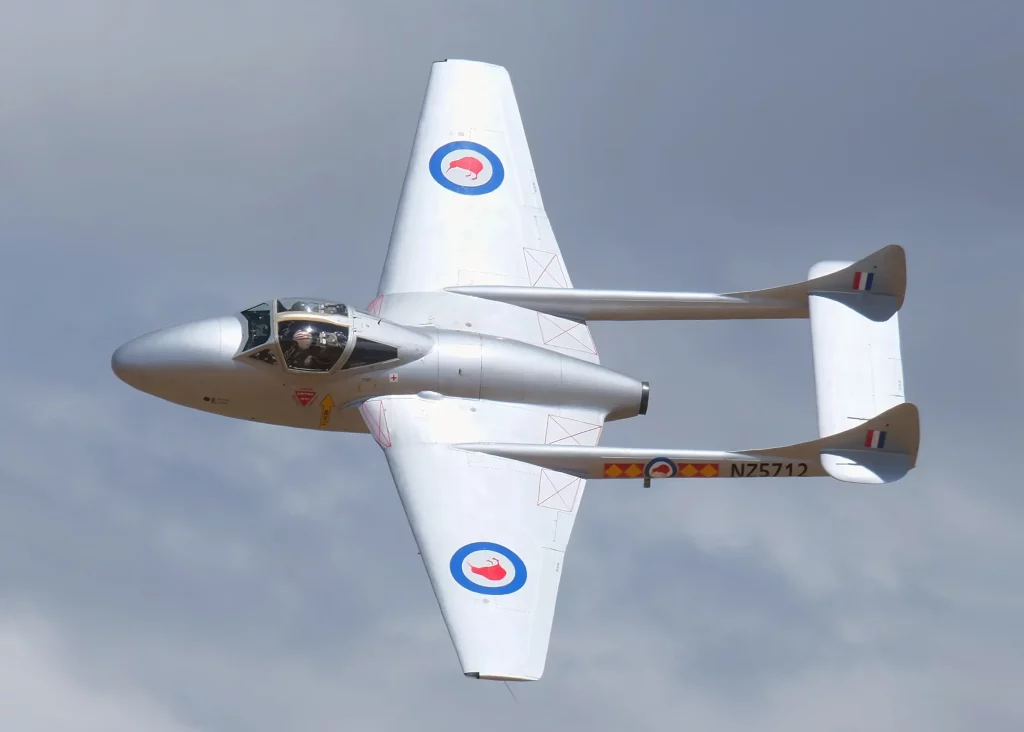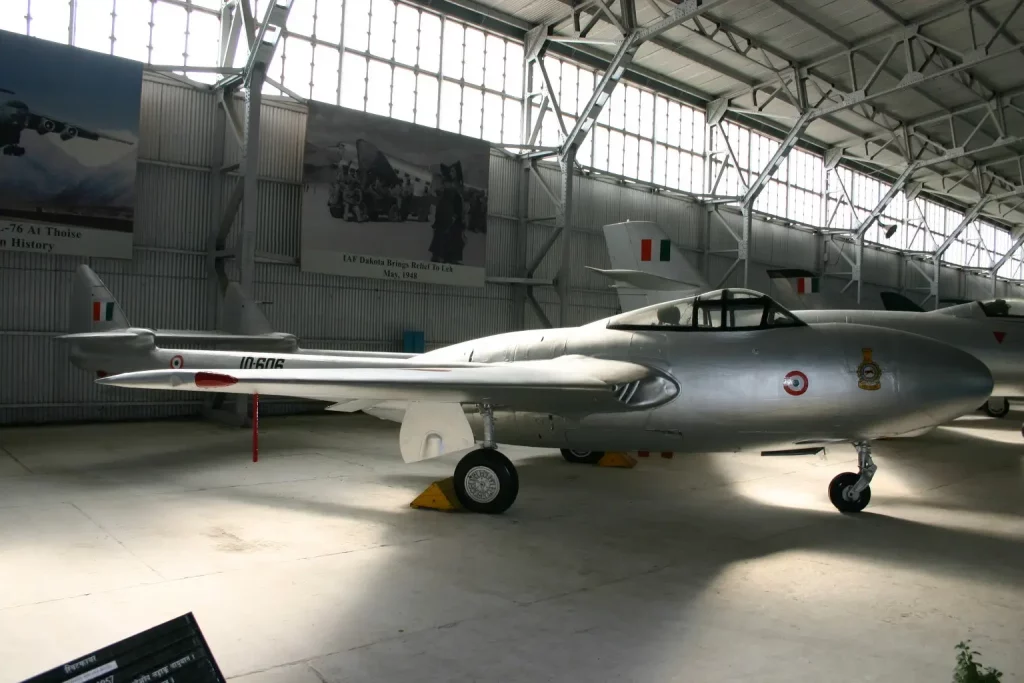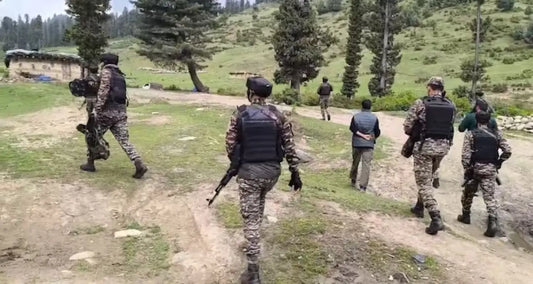India's Historic Entry into the Jet Age: The Legacy of the de Havilland Vampire in the 1965 Indo-Pak War

The induction of the de Havilland Vampire marked India's entry into the jet age, making it the first jet aircraft in the history of the Indian Air Force (IAF). This British-designed jet fighter was commissioned in 1948, just a year after India's independence, and was a significant step in the country's defense modernization. The Vampire's arrival made the IAF the first air force in Asia to operate jet fighters.
Origins and Features of the de Havilland Vampire
Developed by the de Havilland Aircraft Company in the United Kingdom, the Vampire first took flight in 1943. It was later produced under license by Hindustan Aeronautics Limited (HAL) in India. The aircraft was distinguished by its twin-boom tail and central fuselage nacelle, powered by a single Goblin turbojet engine. Although it lacked advanced avionics such as radar, the Vampire's straightforward and resilient construction, compactness, and formidable armament of four 20 mm Hispano cannons made it highly effective for its era.

Service in the Indian Air Force
The IAF incorporated the Vampire F.3 into its fleet in 1948, transitioning from older piston-engine aircraft like the Spitfire and Tempest. Throughout its service, the IAF utilized various Vampire variants, including:
| Variant | Service Period |
|---|---|
| F.3 (day fighter) | 1948–1955 |
| FB.52 (fighter-bomber) | 1950–1974 |
| NF.10 & NF.54 (night fighters) | 1953–1966 |
| PR.55 (reconnaissance) | 1954–1965 |
These variants were deployed in a range of operational roles, from ground attacks to night missions and aerial reconnaissance.

Combat Role in the 1965 Indo-Pak War
The Vampire had its most notable combat engagement during the 1965 Indo-Pakistani War. On September 1, 1965, Pakistan initiated Operation Grand Slam in the Chamb sector of Jammu and Kashmir. In response, Vampires from No. 45 Squadron were tasked with ground attack missions to counter Pakistani armored advances.
Despite their aging design, the Vampires managed to inflict damage on enemy tanks and positions. However, they faced significant challenges from the more advanced F-86 Sabres of the Pakistan Air Force. This engagement resulted in the loss of four Vampire aircraft, prompting their withdrawal from frontline service.

Replaced by Supersonic Fighters
By the mid-1960s, the limitations of the Vampire were clear. India began transitioning to newer and faster jets:
| New Fighter | Details |
|---|---|
| MiG-21 | India's first supersonic fighter, acquired from the Soviet Union |
| HAL HF-24 Marut | India's first indigenously designed jet fighter, developed with German expertise under engineer Kurt Tank |
The Marut played a vital role in ground attack missions, particularly during the 1971 war, while the MiG-21 significantly enhanced India's air superiority capabilities.

Enduring Legacy of the Vampire
Although retired by the mid-1970s, the de Havilland Vampire is remembered fondly in India's military aviation history. It introduced jet propulsion to the IAF, provided essential combat experience in modern warfare, and laid the groundwork for future indigenous aerospace development.
The Vampire's service during the 1965 war and its versatility across various roles underscore its significance in India's evolution from colonial-era aircraft to modern air power.

Conclusion
The de Havilland Vampire, as India's first fighter jet, represented more than just a technological advancement. It was a declaration of India's defense aspirations in the years following independence. From its pioneering role in the IAF to its courageous participation in the 1965 Indo-Pak war, the Vampire remains a pivotal point in Indian Air Force history, bridging the gap between propeller-driven aircraft and the era of supersonic flight.



















